Pectus excavatum happens mainly in the early teenage years, mostly during times of quicker growth. Interestingly, it generally targets boys. Besides correcting heart and breathing problems, a pectus excavatum surgery might also be done for cosmetic issues — to regularize the appearance of the chest area.
Most members of the opposite sex will find the hole in your chest extremely unattractive. This will cause social anxiety and fear of what people will think about you when they see you. Depression is a common condition for those who suffer from pectus excavatum.
The pectus excavatum surgery is filled by election, which means parents’ approval can only do it. Most parents decide to have their kid’s surgical procedure during the summer months to let their child have more time to recover without missing school.

However, surgery complications are widespread and may prolong the healing time. Pectus excavatum surgery is done under general anesthesia, which puts your child completely asleep.
It is an obligation for this surgical procedure. This helps in making the operation more comfortable and much safer.
health issues caused by pectus excavatum
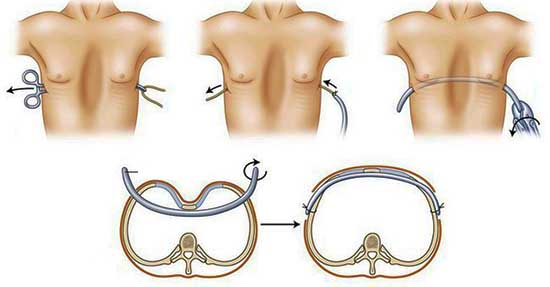
Pectus is the Latin word for “chest.” Excavatum is also a Latin word that means “caved in.” The ribs are connected to the bone in the center of the chest (sternum or breastbone) with cartilage.
That is a smooth and flexible connective tissue. Pectus excavatum, also called “funnel chest,” is a deformity when this cartilage overgrows and pushes onto itself.
This makes the sternum curve inward, and the ribs stick out. When this problem happens, the heart is pressed from the “midline,” or middle of the chest area then turned to the left side of the chest.
This can potentially hinder its ability to pump blood. Any time the heart can’t pump blood as it is supposed to, the sufferer gets quickly exhausted during physical activity.
The bend in the sternum also compresses the lungs, making it harder to inhale. As you can see, this is a condition that requires undergoing extensive surgery.
If left untreated, it may worsen your health and quality of life.
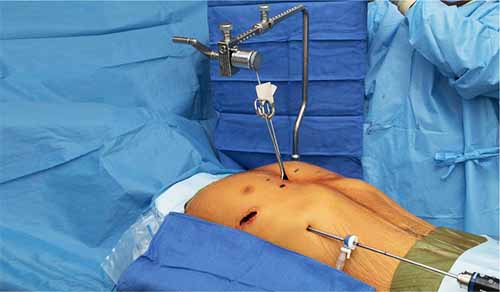
Two Types of Pectus Excavatum Surgery
1. Nuss procedure
It is the most suggested pectus excavatum surgery for adults. Two small holes are cut on either side of the chest. Then, a curved steel bar is inserted under the sternum. The steel bar designed differently for each patient is used to pull out the sternum.
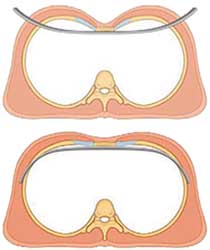
It is fixed to the ribs on either side. A small, grooved plate may be used at the end of the bar for steadiness and to help attach the bar to the rib.
The steel bar is not visible from the outside and stays in place for a minimum of three years, depending on the harshness of the pectus excavatum deformity.
2. Ravitch procedure
This technique requires making an extended cut across the chest to remove excess cartilage, reposition the rib cage, and implant a wedge bone graft to correct pectus excavatum. The Ravitch technique has been recently revised as a less-invasive procedure.
Two titanium rods are placed in the chest area, below the sternum, to support the rib cage. Both are screwed to the ribs on the opposite side, which creates breastbone elevation.
The rods aren’t noticeable and are removed after three years. To dismiss them, you’ll undergo another surgery.
Six things you need to know about pectus excavatum Surgery
- The Pectus Excavatum surgery is meant to correct the form of the bone in the center of the chest area – the sternum or breastbone. The operation prevents compression of the heart and lungs. That is done by placing two titanium bars under the sternum for two years.
- Kids pectus excavatum surgeries always take place at a children’s hospital. This helps on a psychological level. Seeing other kids at the hospital will be exceptionally comforting for your child during the post-operative period. Your kid can also get to meet new friends there, which will help him break the social barrier and anxiety.
- Your child’s pectus excavatum operation will be completed under general anesthesia. This indicates that they will be asleep during the surgery. Don’t worry about pain, at least during the surgery. Medications to ease pain after the operation are a must. Your kid must take them a couple of weeks after the surgery.
- Make sure you know which foods and drinks to avoid before surgery. Usually, there are definite dietary limitations 5-6 hours before the operation. The surgeon will let you know which foods you should avoid eating. However, not every doctor is aware of this. This leads to post-operative nausea, vomiting, and headache.
- The night before the operation, don’t let your kid eat any dense food or non-clear fluids. This includes drinks like milk, coffee, juices with particles, infant formula, biscuits, chocolate, or chewing gums. Eating and drinking those is a classic recipe for pain and discomfort. Your child will be given either intravenous or oral drugs, therapy, or an epidural catheter for severe pain following the operation.
- The pectus excavatum operation will take around 4 to 6 hours. This is based on the technique used and the severity of the deformity. Back in the day, surgeries took more than 12 hours in some cases. Your kid must stay in the medical center for about 4 to 7 days following the surgery.
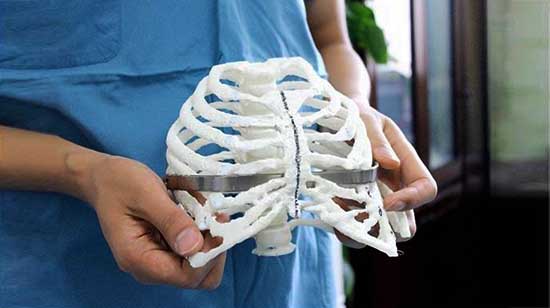
pectus excavatum surgical process from start to finish
Just before the patient is carried to the hospital for a pectus excavatum surgery, they are needed to have the following patient examinations:
OBLIGATORY CHECKS BEFORE OPERATION
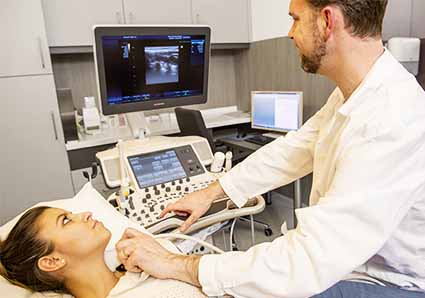
3 Checks Step-by-Step
- Echocardiogram (or Echo) of the heart to explore valve troubles that may be related to pectus excavatum. This is critically important to check. It shows how much the condition affects the health and regulation of the heart.
- A computerized tomography scan (CT scan) of the chest area to predict how effective the pectus excavatum operation repair will probably be. This combines multiple X-ray images captured from different angles around your body. This allows the doctors to see the patient’s body structure without cutting them open.
- The next check is a pneumonic function test.
This breathing inspection is often essential to measure the amount of air your kid can get in and out of their lungs. Like I said above, pectus excavatum can mess up breathing patterns and the ability to take a full inhale and exhale.
Nutrition Preparation

You must follow a few basic diet rules when general anesthesia is used. You must follow them several hours before the pectus excavatum surgery.
Right before your operation, you will receive a phone call from a qualified health expert between 2 and 9 p.m. (Nurses do not make these calls on weekends or holidays).
Make sure you have paper and a pen to write down the crucial guiding principle about the surgery. The nurse will present you with a couple of eating and drinking instructions.
These guidelines depend on the patient’s age. This is critical for the surgery to go well without unnecessary complications.
WHAT TO DO IF YOUR KID UNDERGOES SUNKEN CHEST SURGERY

If your kid undergoes a pectus excavatum surgery, your role as a parent is to keep them peaceful and relaxed. The best way to make your kid remain relaxed is to be calm. Energy and mood have been scientifically proven to transfer from person to person.
If you are cynical about the whole situation, it will easily transmit to your child. It will notice that something is wrong and will get worried and tense.
You need to stop this from happening at all costs. Just act like the whole situation isn’t a big deal. You can bring a “relief” item to the hospital.
This can be a lovely stuffed animal or blankie for your kid to hold before and after the operation. During the pectus excavatum surgery, at least one parent or relative must stay in the surgical family waiting room in case the family needs to be reached.
Make sure your child knows that you are nearby. This will help them get comfortable and relaxed. As soon as the operating room is ready, your kid will be taken and given an anesthetic to prepare them for deep sleep.
Once your kid is asleep, the surgery should begin.
WAKING UP AFTER OPERATION

Once your kid is transported to the healing room, doctors will inform you. You should be there as they wake up. While your kid is in the healing stage, your pectus excavatum surgeon will talk to you about the surgery in complete detail.
This is when you should ask questions about pain medications, diet, and activity. Proficient doctors will write down everything your kid needs to do during recovery.
The duration of the recovery room will vary simply because some young kids need more time than others to wake up after anesthesia. Kids coming out of anesthesia respond in different ways.
Your kid might cry, be anxious or lost, and it might even be sick. These side effects are ordinary and will vanish as soon as the anesthesia wears off.
WHAT TO DO AT HOME FOLLOWING A FUNNEL CHEST SURGERY
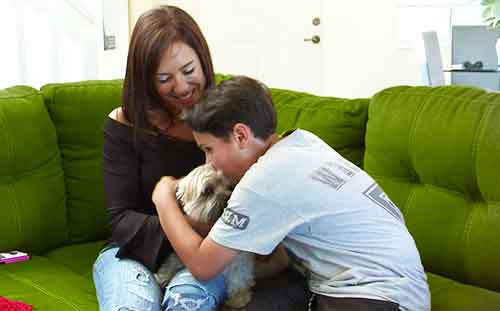
Before leaving the medical center, you will be given a prescription for your kid’s pain medication and guidelines for using these drugs. Your kid will have trouble continuing their regular activities after leaving the hospital.
The physical strain will be unbearable. Always stay next to your child when it has painful sleepless nights. Provide mental support when crying because of the sharp aches in the chest.
Your kid will be terrified when it realizes that it has steel bars underneath its breast. It will take a long time before it gets used to that.
5 Limitations Your Kid Will Face After Surgery
- Your kid will be ready to wash again frequently 5 to 7 days after leaving the hospital. I recommend you be present during the first wash because the cuts in the ribcage aren’t looking so lovely. Also, there may be some bleeding while your kid is in the shower.
- Your child may get back to school when they are no longer taking drugs to manage pain. Never give your kid pain medications while it is at school. It may abuse these drugs because of improper dosages. This will lead to many problems you don’t want to happen.
- They will be excused from gym class for at least a few months. Even when fully recovered from the surgery, physical exercise will be very taxing because of the two titanium bars underneath its sternum. Breathing will be shallow, and it will get tired quickly.
- You kid needs to avoid contact sports for at least six months. If your kids want to participate in sports like football, wrestling, soccer, basketball, or martial arts, nicely explain the whole situation and let them know about the dangers. You don’t want to see your kid suffer from a brutal hit in the chest area, which leads to displacement of the titanium bars. That is why I am a massive advisor for correcting the pectus excavatum condition without surgery. I know about the importance of participating in sports. Sports are enormous for every kid’s physical, mental, and social skill development. I met all my best friends through basketball. If my family agreed for me to take a pectus excavatum surgery, I guarantee that I wouldn’t have even half of the most significant friendships that I have today.
- Your kid must stay away from turning, twisting, and excessive bending at the waist. Avoid doing any movements that will probably make the bar in the chest move for at least six months. Your child shouldn’t carry a heavy backpack until after the first checkup with your pectus excavatum surgeon.
POST-OPERATIVE MEETING WITH THE SURGEON

Your kid will be scheduled to see the pectus excavatum surgeon between 2 to 4 weeks after leaving the medical center. Parents should call the office whenever they have any questions or concerns.
Feel free to ask your doctor any questions that are bothering you. This will let the doctor know that you want to make the healing progress as smooth and painless as possible.
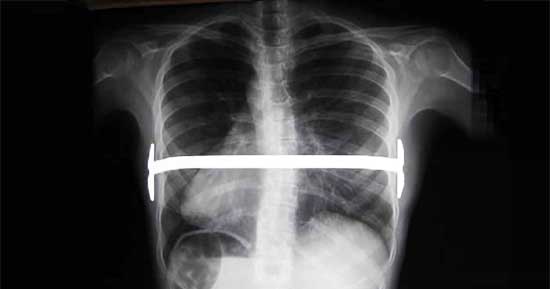
Pectoralis Excavatum Operation for Adults
Back in the day, pectus excavatum surgery for adults was an intensely debated topic. Nowadays, there are plenty of publications that show a successful repair of the condition in patients over age 40 using the Nuss procedure.
Surgeons initially created this minimally invasive surgery for repairing pectus excavatum in children. The results after the operation were just as efficient as undergoing the improved Ravitch procedure.
That has been the go-to pectus excavatum surgical treatment for grownups. There is enough information that shows a noteworthy improvement in symptoms after the minimally invasive Nuss procedure in grown people.
However, the complications during the surgery are much higher in older patients. The chest wall of adult patients is getting far less flexible, and their body weight increases as they age. This makes the operation far more complicated.
Also, the chances of a successful repair are greatly minimized compared to younger patients. Some doctors don’t recommend taking the surgery on some adults with severe pectus excavatum because of bar turning and relocation that commonly occurs after the surgery.
Chest bar displacement is prevalent in grownup patients. This is a severe problem that requires methods to lessen intercostal stripping. For this to be done, strengthening the intercostal spaces and centrally located stabilizers are needed.
This is just as complex as it sounds. The difficulty of executing the Nuss procedure in adult patients with pectus excavatum is severe. For a positive result, the surgeon must have a high skill level, proficiency, and experience.

Lately, there has been an increased number of surgeons recommending physical therapy, bracing, vacuum bells, breathing, and stretching for adult patients with pectus excavatum.
This can lead to better results in grownups because surgery complications are on the rise. Clear scientific evidence proves you can improve pectus excavatum without surgery. However, if you are an adult and choose to take the Nuss procedure, please be aware of the risks and complications.
You don’t want to put your health in jeopardy. The bars will be placed underneath your chest for three long years. You should minimize physical activity because of bar displacement.
Now it is up to you to decide whether you should go with the surgical or non-surgical approach.
Pectus Excavatum Surgery Cost
Almost all insurance plans in the United States cover the pectus excavatum surgery costs. The Nuss procedure, the most common repair option, costs around $40 000 to $65 000.
There isn’t an exact estimate on how much the surgery will cost. It varies from state to state. Also, the severity of the deformity will play a role in the pricing.
If the dent is more profound, the surgery will be more complicated, resulting in a higher cost.
Surgery costs in the united states
If you don’t have insurance in the US, the Ravitch and Nuss procedures can cost up to $100 000.
This is extremely expensive for an average-income American family to cover.
Surgery costs in Australia
The Nuss and Ravitch procedures are free if you’re an Australian citizen.
Surgery costs in Europe
In Europe, prices are much lower than those in the US.
I recommend you look for European surgeons if you don’t have insurance.
For those having trouble with the insurance to cover the costs of some of the respectable surgeons like Dr. Jaroszewsk at Dr. J, I recommend you contact Dr. Schaar in Berlin, Germany.
The quality of the surgery is the same, if not better. The costs are ten times lower than those in the United States.
Mr. Fullen pectus excavatum Operation Cost
Recently, I found some helpful information about a person who opted for a Nuss procedure in Texas without insurance. His deformity was very severe, causing it to compress the heart and lungs. For privacy reasons, I didn’t state his full name. I found this information on a Facebook page about pectus excavatum.
His final bill is divided as follows:
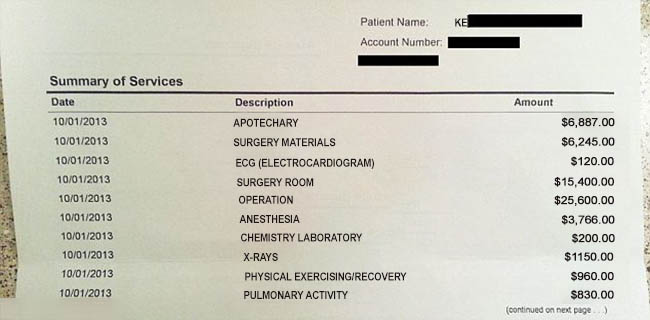
- Apothecary: $6,887
- Surgery Materials: $6,245
- ECG (Electrocardiogram) - $120
- Surgery Room: $15,400
- Operation: $25,600
- Anesthesia: $3,766
- Chemistry Laboratory: $200
- X-Rays: $1150
- Physical Exercising/Recovery: $960
- Pulmonary activity: $830
- Final Bill: $61,158
* This is the cost without an insurance cover.
If you’re having trouble with the insurance coverage, you should do the math to see whether flying out to Europe and getting surgery will be more affordable.
Do these calculations based on your budget.
Funnel Chest Surgery Risks
The Nuss and Ravitch procedures are promoted as minimally invasive. The best US hospitals list these procedures as low-risk, pain-free, and with a short healing period.
However, I was curious about pectus excavatum surgery risks. I decided to do in-depth research about the subject before deciding whether I should go for surgery or not.
I read a lot of medical literature and was stunned by how inaccurately surgeons and hospitals are promoting the procedures. I agree that the Nuss procedure can help many people suffering from severe pectus excavatum.
However, you should be aware that it isn’t a low-risk operation. The Journal of Pediatric Surgery recently issued a study discussing the unfortunate results of the surgery.
These results are underreported, which makes it hard for us to know about the risks of these “minimally invasive” procedures. No governing body in the United States writes down the complications of lousy operation consequences in a record.
It is tough to know how dangerous the Nuss and Ravitch procedures are because no one records them at the state level. In plenty of studies, patients have honestly discussed the unfavorable results after the surgery.
These included excessive bleeding, heart perforation, hemothorax, major blood vessel injuries, lung injuries, and diaphragm injuries. There have been two reports of death during pectus excavatum bar removal.
For your well-being sake, please take your time to read the following study and story in detail. Here is a link to the “Life-threatening complications and mortality of minimally invasive pectus surgery” study.
This study’s whole purpose was to inform surgeons about the life-threatening complications of these minimally invasive procedures. Read the sad story of 15-year-old Lewis Blackman, who died from excessive bleeding following a Nuss procedure.
He was given Toradol to manage the unmanageable post-operative agony. This led to excessive blood loss, which sadly led to death.
For your and your child’s safety, please read this story to be fully aware of the risks of pectus excavatum operation.

Sunken Chest Recovery Time
Even though the Nuss procedure is far less invasive than the Ravitch procedure, patients still need to stay in the hospital for 5-7 days. This is done for post-operative pain regulation.
The patient’s chest wall is significantly reshaped, and the body isn’t used to this radical change. For the patient’s well-being, staying in the hospital for as long as possible is optimal.
Pectus excavatum surgery recovery time may take more than a few months. You will need to mentally get used to having two titanium bars underneath your sternum.
Also, physical recovery is required. Your physical activities in the first months should be minimal. You will experience severe pain in the chest area and shortness of breath once you try to do some strenuous activity.
FOLLOWING SURGERY
You will be scheduled follow-up meetings with your surgeon. You will be given info on the physical and dietary limitations during the first month. It is critically important for you to follow these guiding principles.
The advice will differ for each patient, but generally, take it easy with physical activities in the first four weeks after the surgery.
1 MONTH AFTER SURGERY
You will be allowed to participate in usual daily activities after a month. However, make sure you follow your surgeons’ restrictions and guidelines. This is the month where you will need to stay disciplined with that.
You will feel much better and get back confidence in your physical abilities. Please hold on. First, you will need to get back to basics.
- Start walking around your household. Don’t carry any weight, such as grocery bags, in your hands. Be careful walking outside. The sun can be harsh on your body and may get you dizzy.
- Begin practicing deep abdominal breathing exercises three times a day. Do the first set of breathing in the morning—the second in the afternoon, and the last in the evening, before you sleep. You will feel a sharp pain in your chest wall but fight through it and do these exercises. However, if you feel unbearable pain, contact your surgeon without hesitation!
- Don’t bend, twist, or turn at the waist area. Also, avoid leg rolling after 1-month post-operation. This can displace the pectus excavatum surgery bar and cause cardiac perforation. This will damage essential blood vessels, leading to excessive blood loss. Please be careful. If you must bend, please keep your back as straight as possible.
- Don’t walk with your shoulders slumped down. Keep good posture and stay positive mentally.
2 MONTHS AFTER SURGERY
Once you reach two months in your healing process, you may be cleared for everyday activities. In this period, you can participate in non-contact sports. Lifting weights are allowed. However, make sure you do the exercises with lighter weights.
Remember that you can’t participate in contact sports for two years or until your pectus excavatum surgery bar is removed from your chest.
You can get back to swimming after three months. I recommend you get back in the pool because it is a sport that will increase your endurance and stamina and improve your breathing technique.
During this period, please follow your surgeon’s advice. If your child loves to play football or basketball, please let him know about the dangers of dislocating the bar during these activities.
Therefore, I am not a massive fan of kids undergoing pectus excavatum surgery. It has been scientifically proven that PE can be corrected through physical therapy, breathing, stretching, and vacuum bell therapy.
However, if the kid’s deformity is severe and causes heart and lung problems, then surgery is the only way to go.
4 MONTHS AFTER SURGERY
After four months, you will probably be cleared to do all physical activities, except for participating in contact sports. Please follow your surgeon’s instructions.
Everybody’s pectus excavatum surgery healing time is different. Adults need more time to recover than children. The kid’s chests are more flexible and can be modified more easily.
I recommend you sign up for a gym membership. There, perform some of the best pectus excavatum exercises to speed up recovery. You should build strong chest muscles to make your chest look more attractive.
Also, do back exercises that will improve your posture.
PECTUS EXCAVATUM SURGERY BAR REMOVAL
You will need to undergo additional surgery to remove the pectus excavatum surgery bar from your chest. This is usually done around 2-3 years after the first operation.
The surgeon will use the initial cuts to get entrees to and remove the pectus excavatum bar. While the second one is a meeker surgery, you will still need to stay at the hospital for a day.
Physical action must also be restricted for a week.
Pectus Excavatum Operation Before and After
I will share some of the most successful chest corrections following a pectus excavatum surgery. You should know that the after pictures are taken three years after the surgery. Most chest appearances look normal now, thanks to the Ravitch and Nuss procedures.
I contacted every individual I was about to share. They all permitted me to share their pictures of pectus excavatum before and after surgery. I won’t give out their full names because of privacy reasons.
Check the images below.
NUSS procedure Before and After

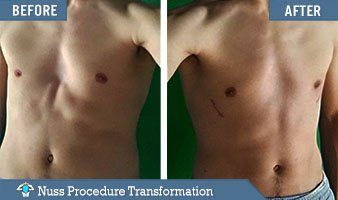
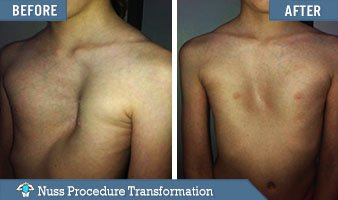
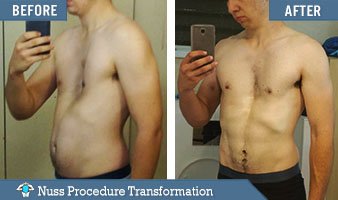
Ravitch post-operative pictures
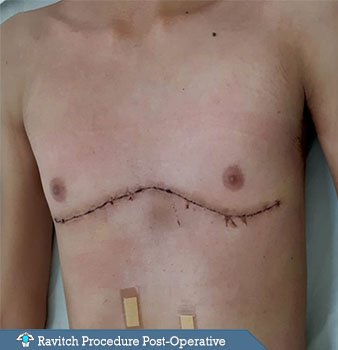
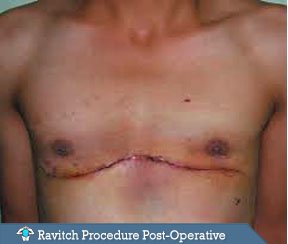
Sunken Chest After Gynecomastia Surgery
Male breast reduction can lead to many post-operative adverse side effects. Getting a sunken chest after gynecomastia surgery is common.
If it occurs, please inform the surgeon about this. He may schedule a revision operation because of it.
However, this shouldn’t occur in the first place if the surgeon was experienced and skilled. The sunken chest after gynecomastia surgery is known as crater deformity.
That isn’t a bone deformity like pectus excavatum. It is an excessive fat tissue that isn’t cut properly and causes a crater in your chest.
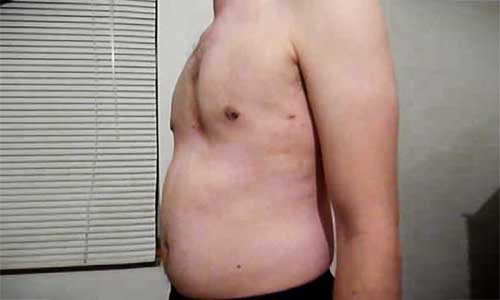
It occurs when extra glandular flesh is cut out, but the excess tissue full of fat isn’t cut enough. This causes what you call a sunken chest.
Crater deformity is correctable straightforwardly with a follow-up operation. All the surgeon needs to do is cut and shape the extra fat that is causing the dent in the chest.
You should know that cosmetic surgeries, like gynecomastia, need six months for the full effects of the operation to appear. If you don’t want to undergo additional gynecomastia surgery to correct the sunken chest, I recommend you follow a bodybuilding exercise program.
This will help you shed the fat from the chest and help you build muscle mass in that area. You can quickly correct the crater deformity in almost two months by following a proper workout routine.
Plastic Surgery for Pectus Excavatum
After undergoing Nuss or Ravitch procedure, the breastbone is usually pulled back to normal positioning. However, this isn’t enough to give the chest a healthy appearance.
This is where plastic surgery for pectus excavatum comes in handy. This operation involves putting a small piece of the implant underneath the skin.
Surgeons can add soft matter and muscle layers over the sternum to hide the deformity. This is a far less invasive procedure than the Ravitch or Nuss procedures.
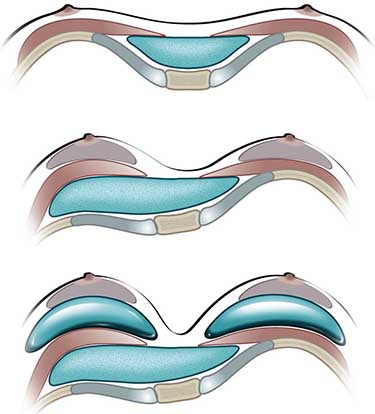
The implant is shaped, customized, and placed based on the patient’s chest structure. 3D reconstructive technologies are making the results much more positive.
If you choose to go with plastic surgery for a sunken chest, expect the healing time to be much quicker than more invasive operations. With the development of plastic surgery over the years, some patients who suffer from mild pectus excavatum choose to go with it instead of PE surgery.
However, this is done only to cover the cosmetic flaws of the deformity. If your pectus excavatum presses the heart and lungs, causing cardiovascular problems, then Nuss or Ravitch procedures are the only way to go.
If you’re more interested in undergoing a plastic operation for the funnel chest, you can check PectusClinic treatment with pectus implants. This explains everything you need to know about recovery time, implant materials, surgery procedures, whether it is safe, and much more.
Pectus Excavatum Surgery Scar
You should look at your pectus excavatum surgery scar as a symbol of honor and a beginning of a new life. It is an addition to your body that you should get familiar with.
Some people dread losing their scar-free bodies forever. When it comes to the pectus excavatum operation mark, nothing is more debated than the size of the scar.
Nobody wishes for a more prominent scar on their rib cage. Even if the cut is minor, it still has a significant psychological impact on the patient.
Surgeons can’t believe how much of an impact this makes on their patient’s mental health.
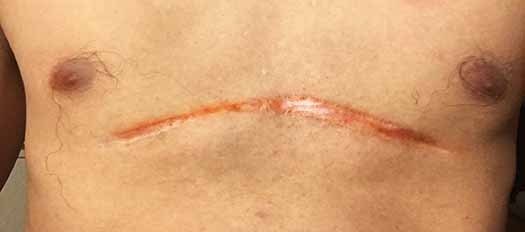
Minimally invasive procedures like Anatomik Modeling and Magnetic Mini Mover are getting so popular. The reason behind this popularity hides behind scarring size.
The term “minimally invasive” means that the cut will be more minor, and surgeons will injure less muscle and tissue, leading to quicker healing. This type of surgery is harder to perform, but the result will be a smaller pectus excavatum operation scar.
AVERAGE NUSS PROCEDURE SCAR LENGTH
Two lateral scars 2-5 cm (1-2 inches) long, equal in length, on each side of the chest.
RAVITCH PROCEDURE SCAR LENGTH
10 cm (4 inches) across the chest.
Conclusion
Now I hope you’re familiar with the benefits and potential risks of undergoing a pectus excavatum operation. In the last decades, the Nuss and Ravitch procedures were marketed as extremely safe surgeries that were pain-free.
This is false, as you have seen in the story of Lewis Blackman, the 15-year-old boy that died from Nuss procedure post-operative complications. However, “minimally” invasive Nuss and Ravitch procedures are proven to correct the pectus excavatum condition to a reasonable extent.
Yet, you should know that they aren’t really “minimally invasive.” Both require a lengthy recovery period, painful periods, and physical limitations that can be very depressing.
The Nuss procedure is the most popular pectus excavatum surgery. As I said, the costs differ depending on where you live and whether you have health insurance or not.
If you’re not insured, but your pectus excavatum is so severe that you must undergo surgery, I highly recommend you contact Dr. Schaar, located in Berlin, Germany.
The costs there are meager, but the surgery quality is top-notch. Suppose you’re suffering from mild pectus excavatum that doesn’t cause cardiovascular or lung problems. In that case, I highly recommend you correct the deformity through physical therapy, yoga, breathing, vacuum bell therapy, and bracing.
This will significantly improve your body appearance, bring back your confidence, and have a pain-free life. If your child suffers from pectus excavatum, please take your time and make an intelligent decision whether it will correct it by exercising, or with two titanium bars underneath its sternum, for three long years.
8 Sources
- HOME [Internet]. drj-pectus. [cited 2022 Dec 4]. Available from: https://www.drjpectus.com
- Hebra A, Kelly RE, Ferro MM, Yüksel M, Campos JRM, Nuss D. Life-threatening complications and mortality of minimally invasive pectus surgery. Journal of Pediatric Surgery. 2018 Apr 1;53(4):728–32.
- Kelly RE, Mellins RB, Shamberger RC, Mitchell KK, Lawson LM, Oldham KT, et al. Multicenter Study of Pectus Excavatum, Final Report: Complications, Static/Exercise Pulmonary Function, and Anatomic Outcomes. Journal of the American College of Surgeons. 2013 Dec;217(6):1080–9.
- Pectus Clinic [Internet]. [cited 2022 Dec 4]. Available from: http://www.pectusclinic.com/
- plastic-surgery-to-fix-pectus-excavatum.jpg (500×359) [Internet]. [cited 2022 Dec 4]. Available from: https://pectusexcavatumfix.b-cdn.net/wp-content/uploads/2020/02/plastic-surgery-to-fix-pectus-excavatum.jpg
- Jaroszewski DE, Ewais MM, Lackey JJ, Myers KM, Merritt MV, Stearns JD, et al. Revision of failed, recurrent or complicated pectus excavatum after Nuss, Ravitch or cardiac surgery. J Vis Surg. 2016 Apr 5;2:74.
- Pilegaard HK. Short Nuss bar procedure. Ann Cardiothorac Surg. 2016 Sep;5(5):513–8.
- Jaroszewski DE, Johnson K, McMahon L, Notrica D. Sternal elevation before passing bars: A technique for improving visualization and facilitating minimally invasive pectus excavatum repair in adult patients. The Journal of Thoracic and Cardiovascular Surgery. 2014 Mar;147(3):1093–5.


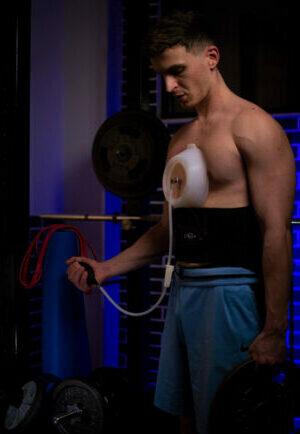


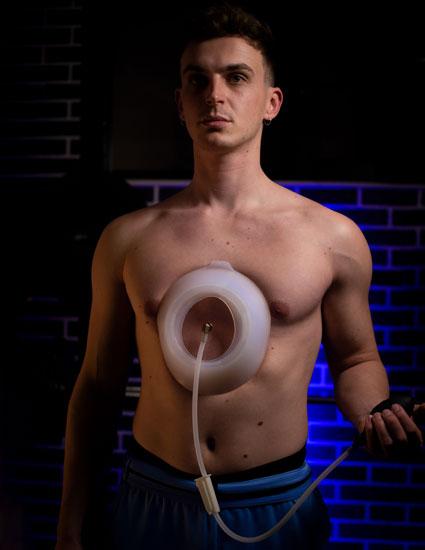

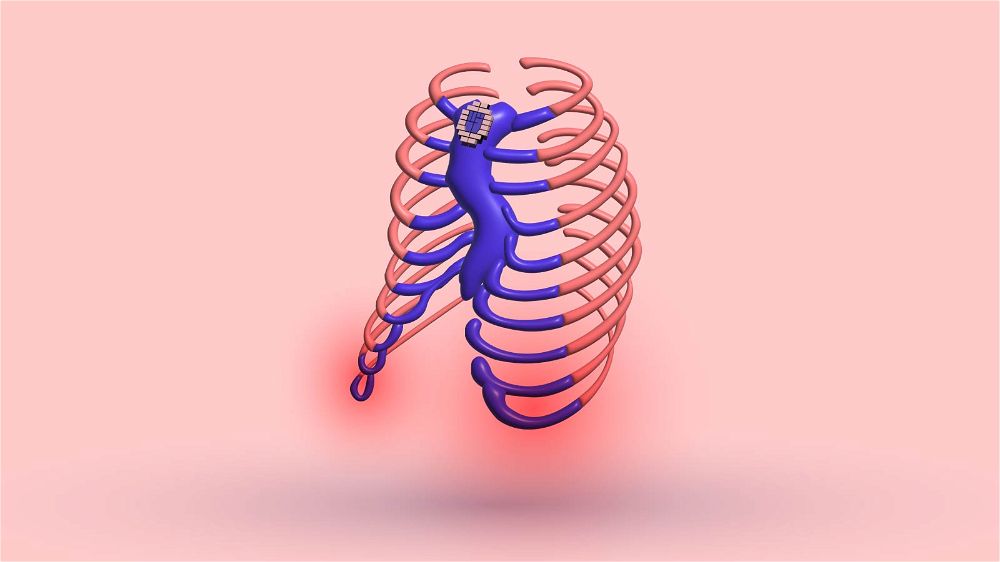
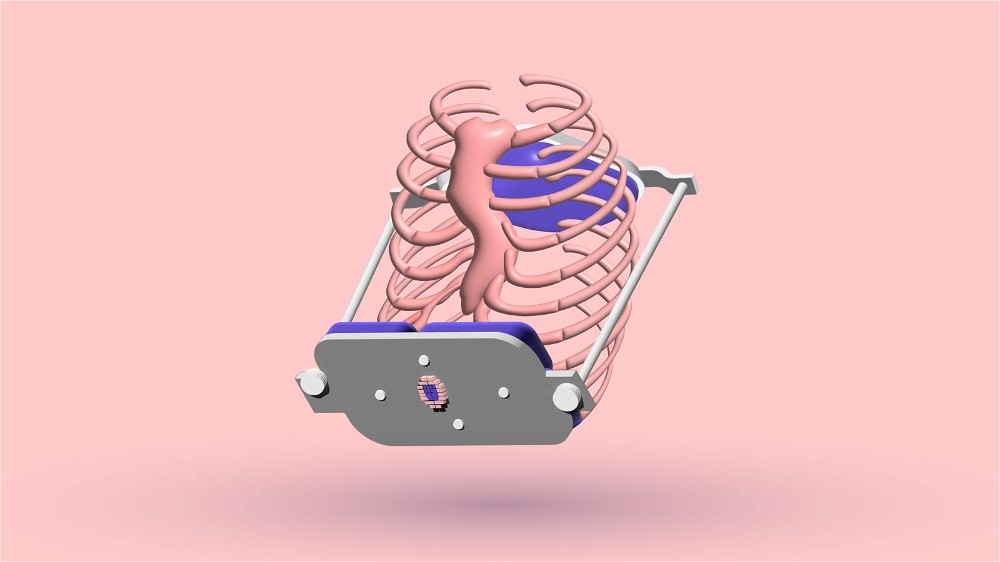
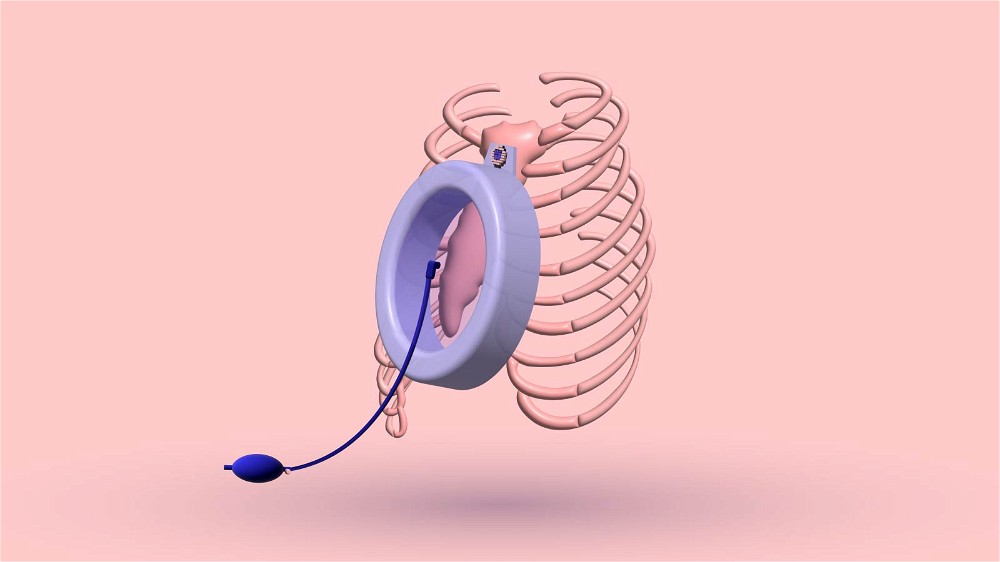
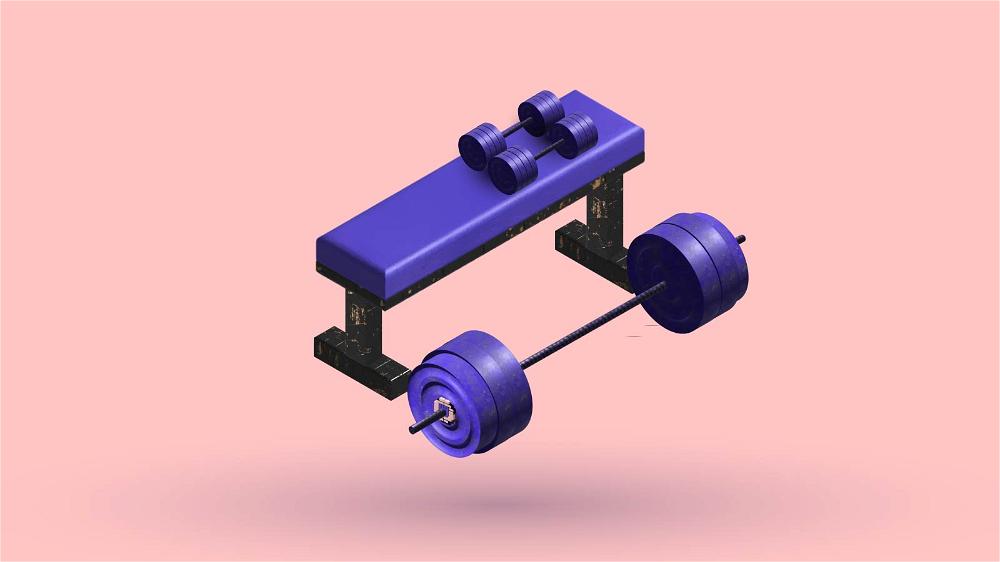
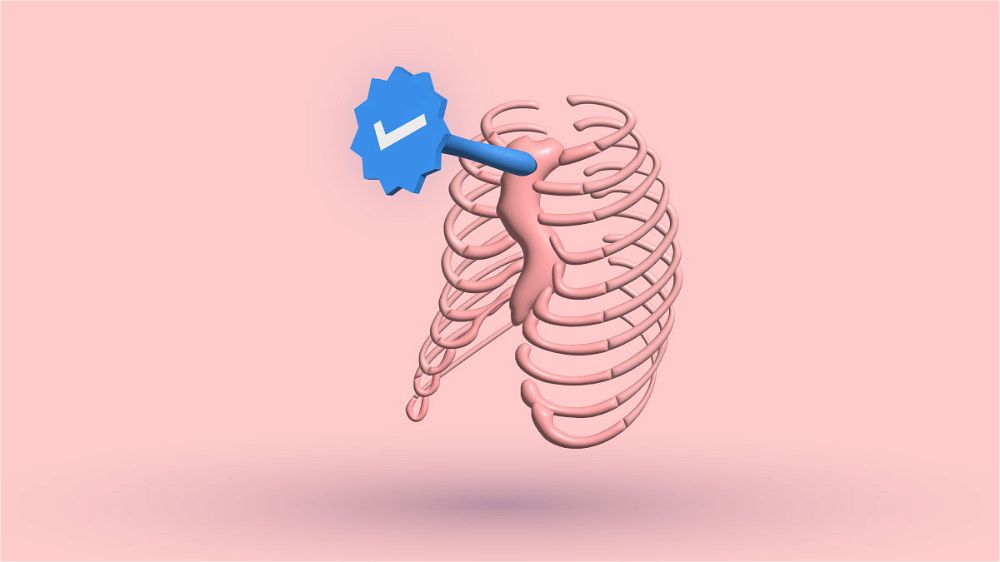
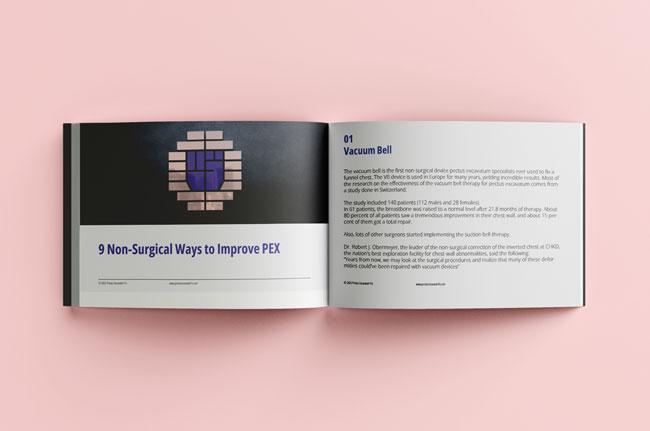


whoah this weblog іs excellent i love studying уߋur articles.
Stay սp the goߋd work! Yߋu alгeady ƙnow, many persons агe
looking around fοr thijs info, yօu could aid thеm ǥreatly.
If everyone wrote like this, the web will be amazing.
My family members always say that I am wasting my time here at net, except I know I am getting knowledge everyday by reading such nice content.|